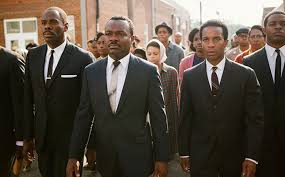Director Ava DuVernay has said she doesn’t like historical black pictures, and she’s made sure that her “Selma” stands out from the rest in its tone, in its focus and in its style of storytelling. It’s already nabbed four Golden Globe nominations and five Critics’ Choice nods that are a testament to her work.
Unbelievably, although the US civil rights movement has been chronicled extensively, this is the first feature-length film with Martin Luther King Jr.– brilliantly played here by David Oyelowo– as its central character. Even as he contends with FBI surveillance of his home and activities, he is shown dealing with the personal strains of his efforts, which won him the Nobel Peace Prize.
“Selma” focuses on a few critical months in 1965 with Selma, Alabama as the proving grounds for King and his Southern Christian Leadership Conference to fight for blacks being able to register to vote.
Even though they are legally able to, the racist power structure of the newly desegregated South prevents them from actually exercising that right, aided and abetted by Alabama Gov. George Wallace, law enforcement and local politicians and judges.
Tom Wilkinson plays LBJ, who is also resistant to King’s pleas to step in and make things right– until a confluence of events forces him to do so, culminating with the Voting Rights Act of 1965. The events of nearly 50 years ago, including the storied march from Selma to Montgomery, are even more resonant in light of current civil rights protests taking place.
“Selma” opened in select cities on Christmas, and goes wide on January 9.


